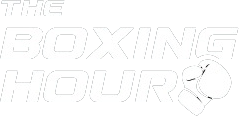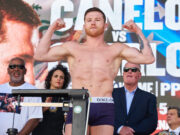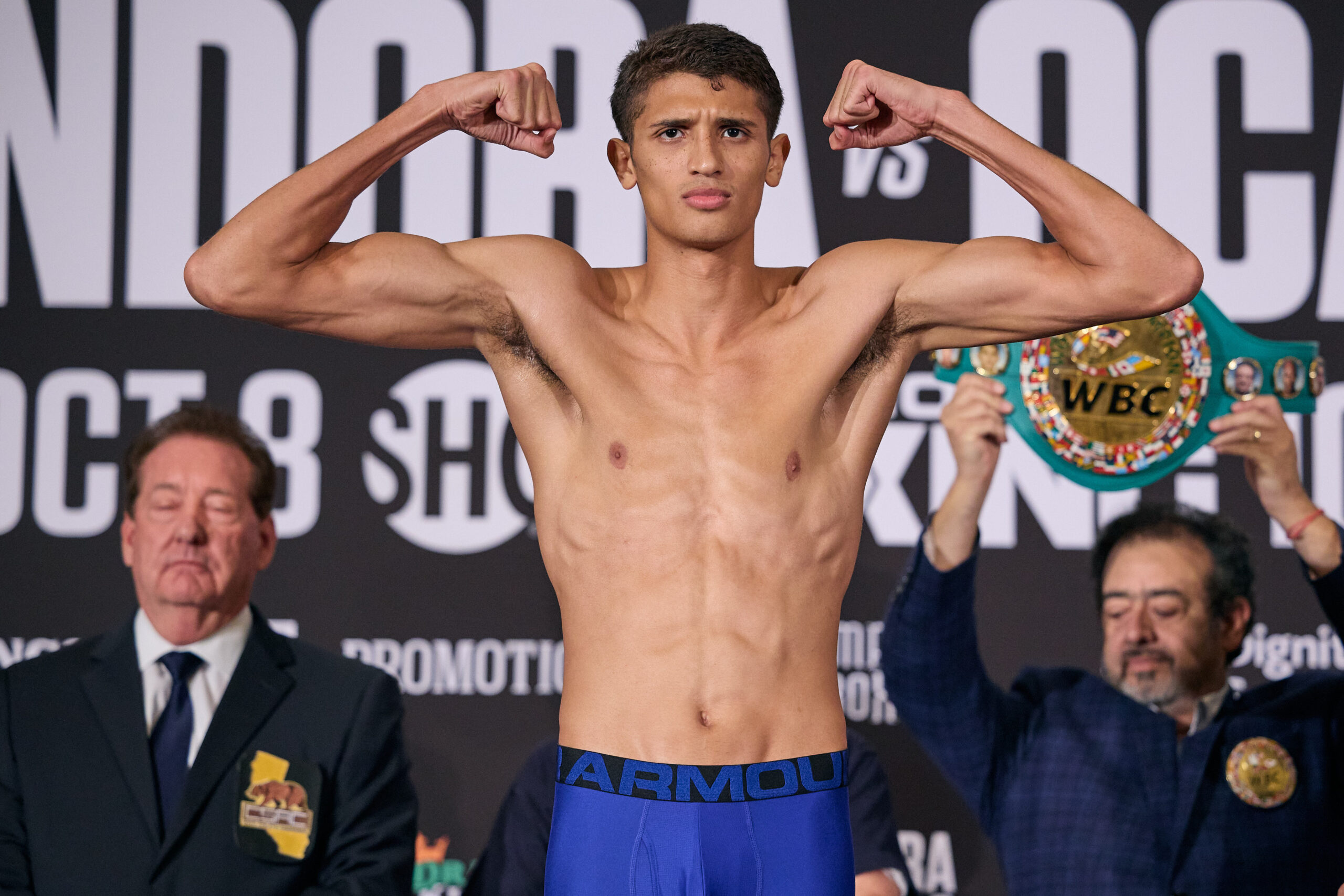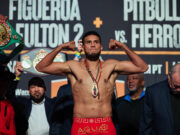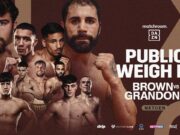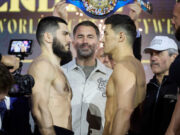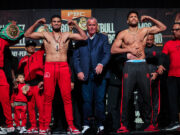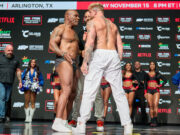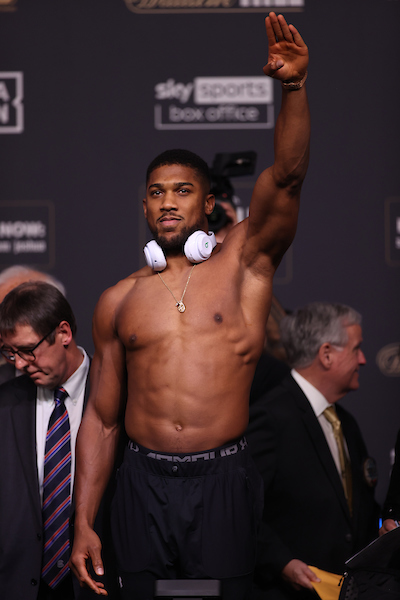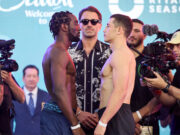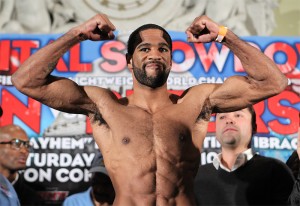
To return to aficionados’ better graces, Saturday Lamont Peterson must perform a stern act of contrition at Boardwalk Hall in Atlantic City, one from which his career is unlikely to emerge intact: a visit to the crucible Argentine Lucas Matthysse makes of a prizefighting ring, a place of penance whence no prizefighter returns undamaged.
What Peterson confronted when he faced Kendall Holt in February is not nearly what will confront him Saturday. Matthysse has none of Holt’s regard for personal safety; Holt possess a certain frailty, like all power punchers, a certain possibility of discouragement that seems untroubling to Matthysse – who luxuriates in knowing that no matter the result, so long as he applies himself relentlessly, his admirers, both male and female, will applaud him because his opponent will be hurt. A scroll through Matthysse’s BoxRec entry since 2009 is instructive: “Castaneda down three times” / “Judah down in rd 10” / “Corley down twice in the 5th, once in the 6th and 3 times in each of the 7th and 8th rounds” / “Alexander down once in rd 4” / “Soto down once at the end of rd 5” . . . and those don’t include what five other prizefights Matthysse ended prematurely.
Lamont Peterson, a man whose persona was fabricated upon making people feel good about him (and in self-interest’s anfractuous way, good about themselves by projection), a man whose career was resurrected after he won cleanly perhaps two rounds, though officially even fewer unanimously, against Timothy Bradley 3 1/2 years ago, resurrected after a draw with flighty Victor Ortiz in 2010 and a surprise decision victory over fragile Amir Khan in 2011, has fought but once in 18 months.
This is because Peterson’s confirmatory B sample came back positive one year ago last week for a banned substance later obfuscated as a non-enhancing form of “bioidentical testosterone derived from soy” by a doctor in the medical-research hotbed of Las Vegas, where Peterson went to be diagnosed with hypogonadism, a condition that caused the testosterone levels of this muscular, fully bearded professional athlete to be so perilously low it “literally shocked” his esteemed physician. Peterson has been forgiven mostly by fans and certainly by the IBF, whose junior welterweight belt he will not defend Saturday, for a pretty simple reason: Fans don’t care about the use of PEDs because fans are paying to be entertained, and athletes who use PEDs are more entertaining than athletes who do not.
There is a parallel to be draughted, a parallel worthy of much greater investigation than it will receive here and now, between the painters of the Renaissance and the athletes of today. In his formative work, “Secret Knowledge,” a book whose study would replace entire art-history departments were academia a meritocracy, British artist David Hockney asserts the historic progression that painting undertook before and during the Renaissance was a technological leap first of all. Beginning most evidently with Jan Van Eyck’s 1434 depiction of a golden chandelier in “The Arnolfini Wedding,” painters employed lenses, which took nature’s camera effect – one first commented on by the ancient Greeks – and projected subjects’ likenesses on a screen, from which they could be traced, a practice that continued uninterrupted until, about 400 years later, chemistry replaced the artist’s hand with a process that became known as photography.
When a person visits, say, National Gallery of Ireland and beholds Caravaggio’s seminal 1602 work, “The Taking of Christ,” and proclaims to her peers, why, it looks just like a photograph!, she doubtfully knows how very right she is. Caravaggio, like Van Eyck before him, and Velazquez and Vermeer after him, fulfilled a demand for realism made by his patrons: the most realistic image wins, and the means of accomplishing such realism should be protected assiduously as the trade secret it is. As Hockney returned to the masterpieces of the last half-millennium and scrutinized them with the improved eye of a skeptic, so might sports fans return to the accomplishments of the last 30 years at least – the records that were set, the feats of theretofore impossible athleticism now routinely accomplished – and assume guilt, always, contrary to what generous impulses they otherwise assign themselves.
Boxing fans were for the most part angry at Peterson for getting caught, if we’re being honest: They wanted a rematch, and Peterson’s carelessness got that rematch cancelled. Sportswriters, meanwhile, were more enraged by the false piety of the spectacle – from the promoter’s self-aggrandizement to the Peterson camp’s ludicrous explanation to the way Peterson’s positive results aged the florid prose with which writers adorned the story of upstanding Lamont, brother Anthony and trainer Barry. Lance Armstrong, now famous for cycling, taught the unscrupulous world of professional athletics how to put the First Amendment on ice with well-placed lawsuits – and that was before every contributor had to “agree to indemnify and hold harmless” his publisher. Telling a reader his hero was a product of chemistry more than work ethic was ever thankless, long before writers were legally liable, as individuals, for doing so.
While it was possible for master painters to take the lessons taught them by lenses and evolve beyond them – Rembrandt and Velazquez certainly did, and Vermeer used them creatively enough to make their obvious use an artform of its own – such is not and will never be possible for athletes, men whose talents are eclipsed by years at the same ages others’ talents are enhanced by them. Lamont Peterson will not return to the form he showed in training camp a year ago, or probably the form he showed against Amir Khan, or probably the form he showed against Timothy Bradley, such as it was, when he fights Lucas Matthysse.
This is a fine turn for all but a handful of Saturday viewers, as the rest of us would like nothing better than ghoulishly to indulge what sadistic impulses delight at others’ subjections to pain – and all the better if a sense of justice can be invoked.
Bart Barry can be reached at bart.barrys.email (at) gmail.com
